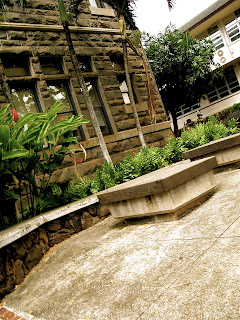Designing A Classroom For Digital Learning
The building where I teach and work was built in 1894, and, with the exception of paint, crown-molding, and air conditioning, not much has changed, in terms of classroom design. Obviously, optimizing a 1:1 laptop learning environment was not a concern. I've been thinking for awhile about how the physical dynamics of classrooms change when every student and teacher has a laptop, for that matter every student is a "digital native" and all the learning/working style implications that come with. But all of my ideas were pretty random and based on nothing.
Then, I came across a brief exchange in "The Talk Of The Town" in last week's New Yorker. (I marked the quote but left it at home, will post later). The discussion was about the renovation of newrooms, specifically The New York Times and Washington Post (if I remember correctly). The times had designed what they thought would be a workroom that encouraged the most collaborative and productive kinds of interactions amongst employees. The space was described as one huge room, no offices, no cubicles, just open table with work stations, and flat screen TVs and tickers all over. Sounds 21st century right? Vs. offices and printing presses, the scene from the movies, as the article reminds. But in the following issue, there was a response to the article, citing design research, which says that the big room design is, in fact, counterproductive. The most efficient 21st century space is more expensive, of course, and it is a perimeter of closed offices, looking into an open, middle space. The offices are for solo work, and the open space is for spontaneous and planned collaboration. I got excited and started to think about how this would look in a classroom.
As a follow-up, I posted a forum question about how the students liked the arrangement and asking them what other ideas they have for classroom design.

No comments:
Post a Comment